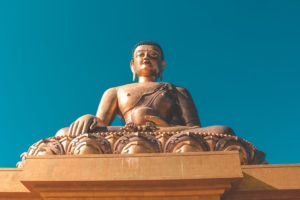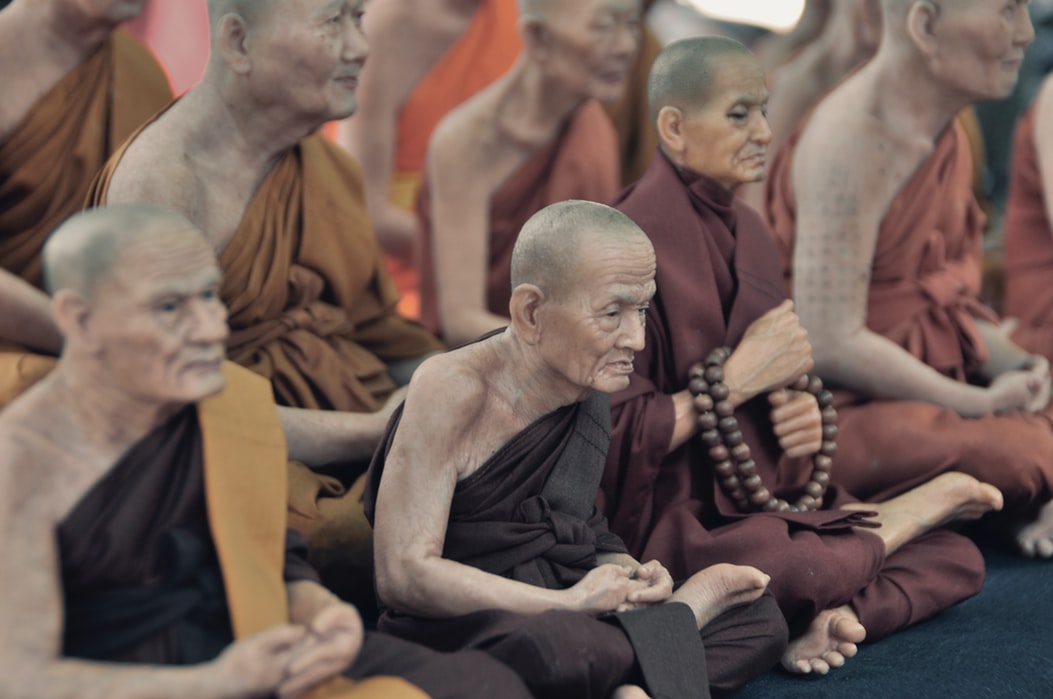Buddhism was founded approximately 2,500 years ago by Siddhartha Gautama. According to Buddhist tradition, Gautama was the son of a wealthy chief in Nepal. This chief did everything within his power to ensure that his son would never encounter suffering. The old, the sick, and the dying were all kept out of Gautama’s sight. One day, however, the Buddha went on a journey and encountered an elderly man, a sick man, and a dying man. It was then that Gautama realized that human life was full of suffering. However, this was not the end of his visions. His final sight was of an ascetic monk, a man who renounced earthly pleasures seeking to find true happiness in a world of suffering. Gautama decided to follow the monk’s example and become a monk.
 The future Buddha joined a community of monks and participated in practices that were meant to mortify the body. Gautama gave up his family life, the luxuries of being the son of a chief even fasted to the point of near starvation. However, Gautama left the order of monks, realizing that he was no closer to true happiness as a monk than he was as the son of a chief.
The future Buddha joined a community of monks and participated in practices that were meant to mortify the body. Gautama gave up his family life, the luxuries of being the son of a chief even fasted to the point of near starvation. However, Gautama left the order of monks, realizing that he was no closer to true happiness as a monk than he was as the son of a chief.
Gautama then left and sat underneath a Bodhi tree, determined to reach enlightenment and true happiness. After deep meditation, Gautama reached his goal and became enlightened. It was then that he became the Buddha, which means awakened one or enlightened one. When some of the ascetic monks came to see him, they initially had no intention of paying respect to the Buddha. However, they soon realized that he had reached a state of happiness and peace that they had not.
The Buddha’s message can be summed up in the Four Noble Truths, which are the foundation of Buddhist thought and practice.
The First Noble Truth
The First Noble Truth states that to live is to suffer. According to Buddhism, all conditioned things are impermanent, selfless, and insufficient for true happiness. This means that money, luxuries, romantic love, feelings of joy and happiness, and life are all temporary, selfless and that they do not ultimately make us happy. This first principle is called Dukkha.
The Second Noble Truth
The Second Noble Truth states that suffering is caused by attachment to desire. According to one tradition, there are three types of desire. There is a desire for pleasure, the desire to become, and the desire to get rid. Humans get attached to other people, to things, and ideas. However, not all of these desires can be filled. And when they are fulfilled, they will still bring suffering in some way.
The Third Noble Truth
The Third Noble Truth states that there is a way to end this suffering; there is a way to end attachment to desire. This leads us to the Fourth Noble Truth
The Fourth Noble Truth
The Forth Noble Truth states that the way to end suffering is to practice the Eightfold Path. The Eightfold Path consists of practicing:
1. Right View
2. Right Intention
3. Right Speech
4. Right Action
5. Right Livelihood
6. Right Effort
7. Right Mindfulness
8. Right Concentration
Today, Buddhism is found in three main schools, each of which has its own traditions and sub-schools. These schools are not in conflict, rather they point to the same truth through different methods. The schools of Buddhism are:
Theravada
Theravada Buddhism is the oldest continuing school and has the Pali Canon as its scripture. This school focuses on personal enlightenment and has very little ritual. This school of Buddhism is practiced mainly in Southern Asia.
Mahayana
Mahayana Buddhist ideas developed after Theravada. These schools usually have additional texts in addition to or in place of the Pali Canon. Mahayana has several sub-schools which include Zen Buddhism and Pure Land Buddhism.
Vajrayana
The Buddhists who follow in the Vajrayana schools of Buddhism use Tantric practices in order to quickly reach Enlightenment. The Dalai Lama is an important figure whose own practice is Vajrayana.





